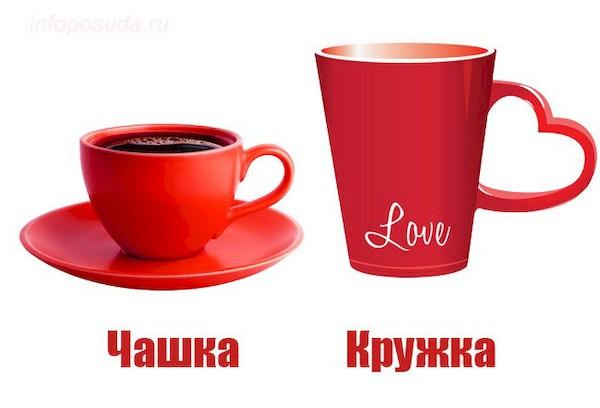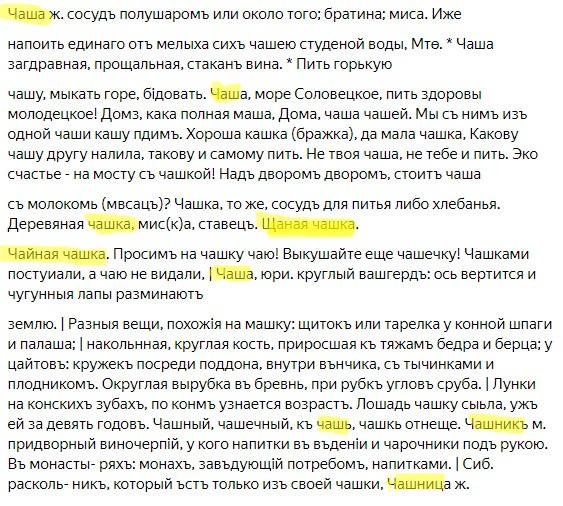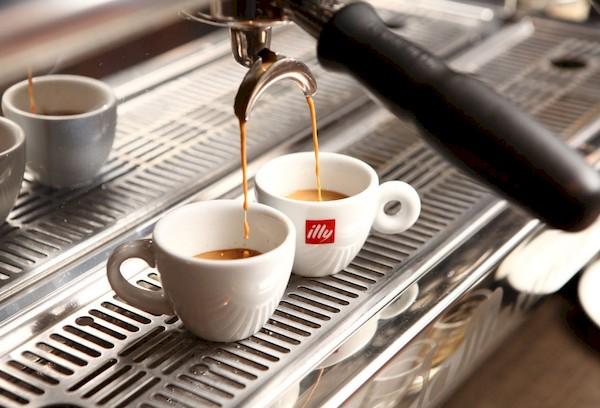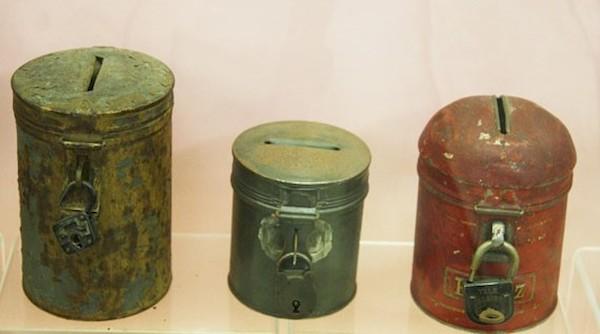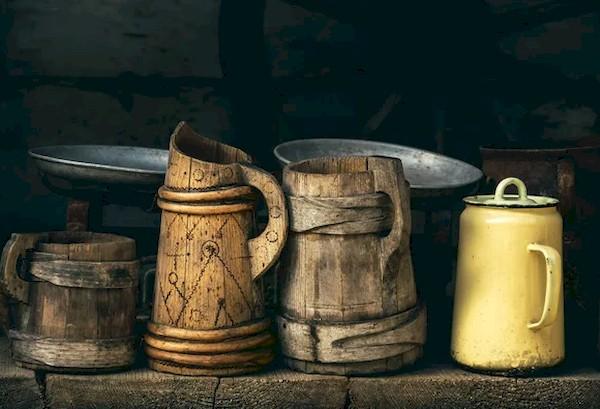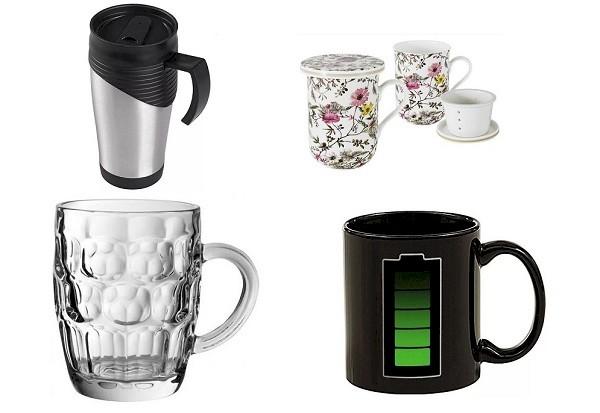What is the difference between a cup and a mug?
People are divided into those who do not care what to use to quench their thirst and those who know exactly the difference between a cup and a mug. They have different purposes and are used to serve different drinks. To explain the difference between a mug and a cup, let's give a simple example. At social events, in cafes and restaurants, hot drinks are served exclusively in cups - laconic and small. If you order beer at a bar, it will most likely be brought in a mug - capacious, thick-walled, with a comfortable handle.
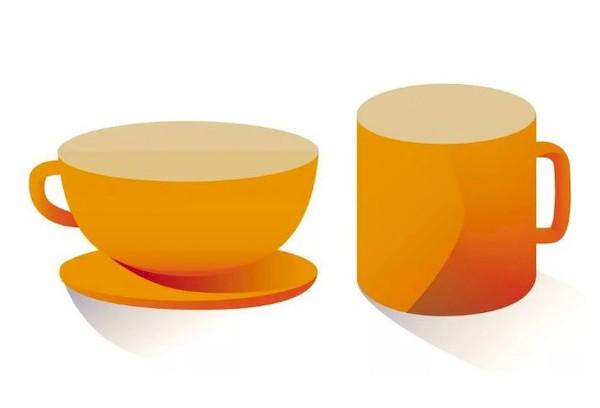
How to distinguish a cup from a mug?
One quick glance is enough to distinguish a cup from a mug. It is characterized by:
- small volume;
- shape resembling a hemisphere;
- presence of “relatives” (included in the service);
- lack of a handle or a handle with an inconvenient small hole;
- maybe a saucer included (a mug is never included with a saucer!)
To better understand the difference between these tableware items, we offer a comparison in the table:
| Cup | Mug | |
| Form | hemispherical, round | cylindrical, elongated |
| Material | ceramics, porcelain, fire-resistant glass, less often other | glass, ceramics, metal, less often others |
| Walls | usually thin | usually thick |
| With a handle | not always, with 1 or 2, the hole is small | yes, the hole is large and easy to hold |
| Volume | 30-180 ml;
up to 500 ml (tureens) |
from 250 ml to 2 l |
| Additionally | saucer, teaspoon | lid, spout |
| Purpose | special events;
tableware for public catering establishments; tea ceremony; for espresso |
for everyday use;
at the bar for beer |
| Application | hot drinks: tea, coffee, hot chocolate, mulled wine, punch;
soups, broths; compote |
water, beer, hot and cold drinks |
Differences in the photo:
Cup - what is it?
To understand what a cup is, let’s take the definition of the word from D. N. Ushakov’s dictionary. Cups are called:
- small round-shaped vessels made of earthenware, porcelain and similar materials;
- bowls (for example, for cabbage soup);
- patellar round bones;
- plates suspended from the balance beam;
- some objects of a similar shape (for example, a sword cup, a hookah).
Examples of word usage in Dahl's dictionary (1866):
It is obvious that the term was applied to a large number of subjects. Nowadays, cups also come in a variety of varieties:
- for tea and coffee;
- for espresso;
- for soup;
- for compote.
It's hard to find a dinnerware set that doesn't include this important item. Without it, it is impossible to hold a tea ceremony. A coffee lover's morning will be ruined without aromatic, invigorating espresso.
The cup is usually served with a saucer.
The saucer is not assigned a decorative role at all. The walls of the cup are usually very thin and become very hot from hot drinks. There is a possibility of getting burned and ruining the table. The saucer is needed for safety net.
According to etiquette, the cup should only be lightly held by the handle.
You can also pour very hot liquid into the saucer for instant consumption. Due to the shallow depth and maximum contact with air, everything hot in the saucer cools down almost immediately.
Mug from the word "jug"
Few people know that mugs have long been used mainly in drinking establishments for intoxicating drinks and in churches for collecting donations.
Interpretation of the “mug” by D. N. Ushakov:
- A small vessel in the shape of a glass with a handle (tin, clay, with honey).
- A measure of the liquid that it holds (a mug of beer).
- A metal vessel with a lid with a hole. Used to collect money.
In the old days, mugs were larger than glasses. In Rus' in the 16th-17th centuries. they were used to measure the volume of liquids. 1 mug contained 10 glasses or 1.23 liters.
According to one version, the word appeared in Russian after the 15th century and comes from the Polish “kruż”, which means “jug”. Obviously, previously the mugs were very large. Modern varieties are more compact and have a convenient volume of 250, 350 or 500 ml.
Special types:
- thermal mug;
- brewing mug;
- changes color when heated;
- for beer.
Question answer
What's better?
A mug is best suited for everyday life and work. It has an affordable price, a variety of designs and colors. Many people order printing on a mug so as not to confuse it with others, emphasize individuality, and lift the mood of themselves and others. It is convenient to drink most popular drinks, both hot and cold. But for family dinners, receiving guests, and special events, you can’t do without a tea set with elegant cups. They are also necessary for people who drink brewed tea, like to hold tea ceremonies and meet business partners at home.
How is a mug different from a glass?
A glass without a handle, usually made of glass.
In the modern world with the frantic pace of life, cups have practically gone out of use. They assume that the drink will be slowly tasted and savored, enjoying the amazing taste. It's a different mug: simple, familiar, roomy. You can use it without obligation, on the go.For many, it is “in business” all day long and has taken up permanent residence in the kitchen near the sink.
